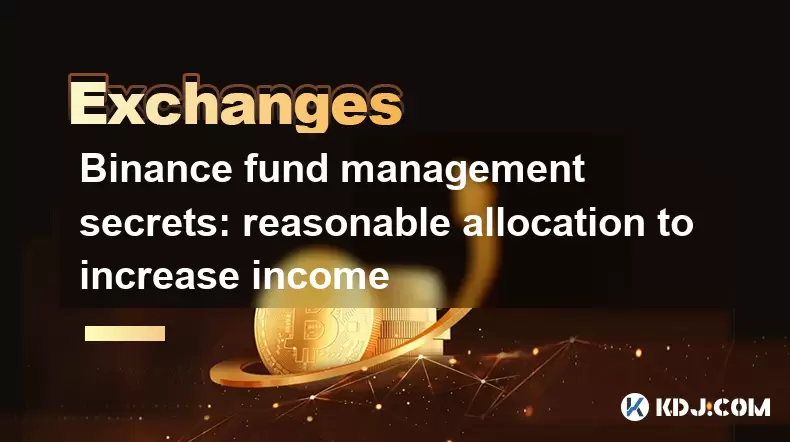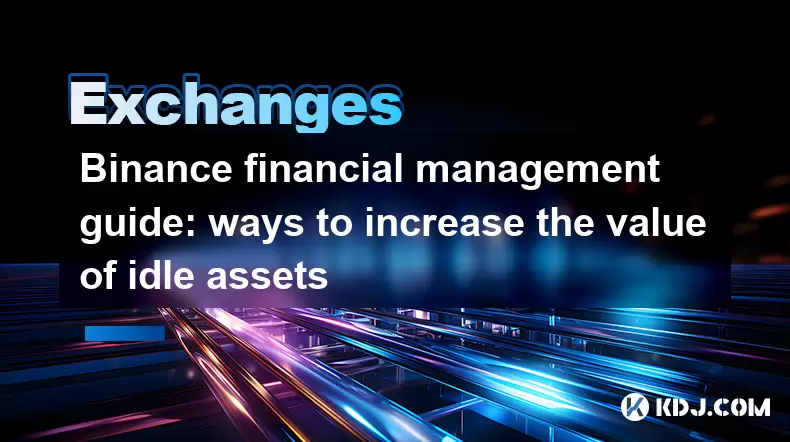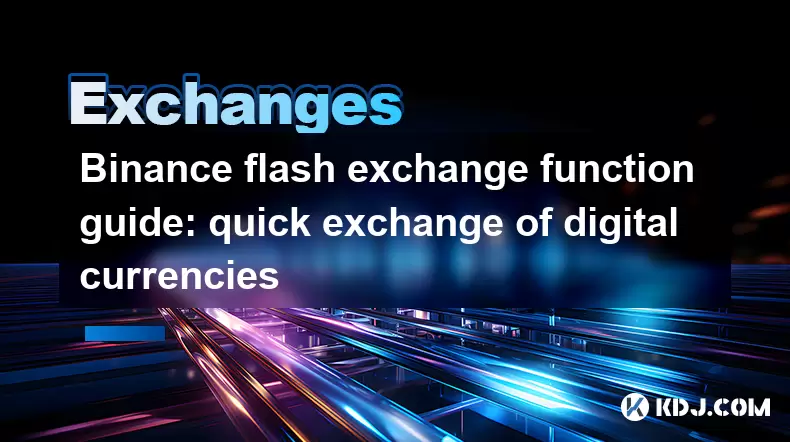-
 Bitcoin
Bitcoin $107,341.7259
0.15% -
 Ethereum
Ethereum $2,438.6204
0.70% -
 Tether USDt
Tether USDt $1.0003
-0.02% -
 XRP
XRP $2.1866
1.94% -
 BNB
BNB $649.0952
0.36% -
 Solana
Solana $150.9602
5.63% -
 USDC
USDC $0.9999
0.00% -
 TRON
TRON $0.2742
0.40% -
 Dogecoin
Dogecoin $0.1645
1.93% -
 Cardano
Cardano $0.5669
1.18% -
 Hyperliquid
Hyperliquid $37.8286
4.19% -
 Bitcoin Cash
Bitcoin Cash $491.4669
-2.74% -
 Sui
Sui $2.8150
3.06% -
 Chainlink
Chainlink $13.4184
2.91% -
 UNUS SED LEO
UNUS SED LEO $9.0809
0.27% -
 Avalanche
Avalanche $18.0295
2.60% -
 Stellar
Stellar $0.2396
1.19% -
 Toncoin
Toncoin $2.8587
0.13% -
 Shiba Inu
Shiba Inu $0.0...01160
2.59% -
 Litecoin
Litecoin $86.4192
1.45% -
 Hedera
Hedera $0.1486
1.19% -
 Monero
Monero $308.4324
0.87% -
 Polkadot
Polkadot $3.4202
1.43% -
 Bitget Token
Bitget Token $4.6436
-0.34% -
 Dai
Dai $0.9998
-0.02% -
 Ethena USDe
Ethena USDe $1.0002
0.00% -
 Uniswap
Uniswap $7.1527
3.29% -
 Pi
Pi $0.5357
-8.45% -
 Pepe
Pepe $0.0...09588
4.61% -
 Aave
Aave $259.9759
0.81%
How do I cancel an unfinished transaction on Crypto.com?
Unfinished Crypto.com transactions are pending and can't be canceled; wait, check fees, ensure connectivity, and contact support if needed.
Apr 02, 2025 at 12:57 am

Understanding Unfinished Crypto.com Transactions
Unfinished transactions on Crypto.com, like other cryptocurrency exchanges, typically refer to pending transactions that haven't yet been confirmed on the blockchain. This can happen due to network congestion, insufficient fees, or issues with your wallet or the exchange itself. Crucially, you can't directly "cancel" a transaction in the traditional sense once it's been broadcast to the network. Instead, you need to understand the underlying mechanics and take appropriate actions.
Identifying an Unfinished Transaction
First, you need to confirm the transaction is indeed pending. Check your Crypto.com transaction history. A pending transaction will usually display a status indicating it's awaiting confirmation. The exact wording may vary, but it will clearly show the transaction isn't complete. Look for terms like "Pending," "Processing," or similar indicators. If you can't find it, check your wallet directly, as the transaction might be visible there.
Actions to Take for Pending Transactions
The process of dealing with a pending transaction depends heavily on the reason for the delay. Here are some steps you can take:
Wait: The simplest and often most effective approach is to wait. Network congestion is a common cause of delays. Transactions will eventually confirm, but the time it takes can vary significantly depending on the cryptocurrency and network conditions. Be patient and monitor the transaction's status.
Check Transaction Fees: Insufficient transaction fees are another frequent culprit. If the fee was too low, the transaction might be stuck in the mempool (a pool of unconfirmed transactions). Crypto.com might allow you to increase the fee, but this depends on the specific cryptocurrency and the exchange's capabilities. Contact their support if you're unsure.
Verify Network Connectivity: Ensure you have a stable internet connection. A poor connection can prevent the transaction from being properly broadcast or confirmed. Try restarting your router or device.
Check Your Wallet: Verify that your Crypto.com wallet is functioning correctly. Any issues with your wallet could prevent the transaction from completing. Check for updates or contact Crypto.com support if needed.
Contact Crypto.com Support: If you've waited a reasonable time and the transaction remains pending, contact Crypto.com's customer support. They may be able to investigate the issue and provide assistance. Provide them with the transaction ID or hash for quicker resolution.
Understanding Blockchain Confirmation Times
The time it takes for a cryptocurrency transaction to confirm depends on the specific blockchain's characteristics. Some blockchains, like Bitcoin, have longer confirmation times than others, like some altcoins. Network congestion can further extend this time. Patience is key, especially with larger transactions or during periods of high network activity. Don't rush the process; improper actions could potentially worsen the situation.
Preventing Future Unfinished Transactions
To minimize the risk of unfinished transactions in the future, consider these preventative measures:
Use Sufficient Transaction Fees: Always set transaction fees appropriately. Higher fees generally lead to faster confirmation times, especially during periods of network congestion. Crypto.com usually provides fee estimations, but it's wise to research current network conditions before finalizing a transaction.
Maintain Stable Internet Connection: A reliable internet connection is essential for seamless cryptocurrency transactions. Avoid initiating transactions in areas with unreliable internet service.
Regularly Update Your Software: Ensure your Crypto.com app and any related software are updated to the latest versions. Updates often include bug fixes and performance improvements that can prevent transaction issues.
Double-Check Transaction Details: Before confirming any transaction, meticulously review all details, including the recipient address and amount. A single mistake can lead to irreversible loss of funds.
Frequently Asked Questions
Q: What if my transaction is stuck for a very long time?
A: If your transaction remains pending for an unusually long period (significantly longer than the typical confirmation time for the cryptocurrency), immediately contact Crypto.com support. They can investigate the problem and potentially provide solutions.
Q: Can I cancel a transaction that has already been broadcast to the blockchain?
A: No, once a transaction is broadcast, you generally cannot directly cancel it. The blockchain is immutable, meaning transactions cannot be reversed. You might be able to contact the recipient to return the funds but this is not guaranteed.
Q: What information should I provide to Crypto.com support when reporting a pending transaction?
A: Provide your transaction ID or hash, the cryptocurrency involved, the amount transferred, the recipient address, and a detailed description of the problem. The more information you provide, the faster they can assist you.
Q: Are there any fees associated with cancelling a transaction?
A: You cannot directly cancel a transaction on the blockchain. Therefore, there are no cancellation fees. However, if you need to send a replacement transaction, you will incur the network fees for that new transaction.
Q: How long should I wait before contacting support about a pending transaction?
A: The waiting time depends on the cryptocurrency and network conditions. If it's significantly longer than the average confirmation time for that particular cryptocurrency, it's advisable to contact Crypto.com support sooner rather than later. Check the network status of the specific blockchain to get an idea of expected times.
Disclaimer:info@kdj.com
The information provided is not trading advice. kdj.com does not assume any responsibility for any investments made based on the information provided in this article. Cryptocurrencies are highly volatile and it is highly recommended that you invest with caution after thorough research!
If you believe that the content used on this website infringes your copyright, please contact us immediately (info@kdj.com) and we will delete it promptly.
- Kitten Craze Online: Hunting for the Purr-fect Coin Purse
- 2025-06-29 10:30:12
- Pudgy Penguins Soar to 3-Month High Amidst PENGU ETF Buzz!
- 2025-06-29 10:30:12
- AI Agents, Token Role, and Capitalization: Navigating the Web3 Frontier
- 2025-06-29 10:50:11
- Avalanche Price Forecast: Grayscale Boost Signals Potential Rally to $50?
- 2025-06-29 10:50:11
- Khazan's Getting a Facelift: Balance Changes and Freebies Galore!
- 2025-06-29 11:10:12
- Wall Street's Crypto Rival Battle: Saylor vs. Chanos and the Meme Coin Mania
- 2025-06-29 11:10:12
Related knowledge

Binance spot market analysis: seize the best time to buy and sell
Jun 19,2025 at 04:56pm
Understanding the Binance Spot MarketThe Binance spot market is one of the most popular platforms for cryptocurrency trading globally. It allows users to trade digital assets at current market prices, making it essential for traders aiming to buy low and sell high. Unlike futures or margin trading, spot trading involves direct ownership of the asset aft...

Binance fund management secrets: reasonable allocation to increase income
Jun 22,2025 at 02:29pm
Understanding Binance Fund ManagementBinance fund management involves strategic allocation of your cryptocurrency assets to optimize returns while managing risk. The key to successful fund management lies in understanding how different investment options on the Binance platform can be utilized to create a diversified portfolio. This includes spot tradin...

Binance trading pair selection skills: find the best buying and selling combination
Jun 23,2025 at 02:49am
Understanding the Basics of Trading Pairs on BinanceBefore diving into trading pair selection skills, it's essential to understand what a trading pair is. On Binance, a trading pair refers to two cryptocurrencies that can be traded against each other. For example, BTC/USDT means Bitcoin is being traded against Tether. Each trading pair has its own liqui...

Binance new coin mining strategy: participate in Launchpool to earn income
Jun 23,2025 at 11:56am
What is Binance Launchpool and how does it work?Binance Launchpool is a feature introduced by the world’s largest cryptocurrency exchange, Binance, to allow users to earn new tokens through staking. This platform enables users to stake their existing cryptocurrencies (such as BNB, BUSD, or other supported assets) in exchange for newly launched tokens. T...

Binance financial management guide: ways to increase the value of idle assets
Jun 19,2025 at 11:22pm
Understanding Idle Assets in the Cryptocurrency SpaceIn the fast-paced world of cryptocurrency, idle assets refer to digital currencies that are not actively being used for trading, staking, or yield farming. Holding these funds in a wallet without utilizing them means missing out on potential growth opportunities. Binance, as one of the leading platfor...

Binance flash exchange function guide: quick exchange of digital currencies
Jun 23,2025 at 12:29pm
What is the Binance Flash Exchange Function?The Binance Flash Exchange function is a powerful tool designed to allow users to instantly swap between supported cryptocurrencies without the need for placing traditional buy/sell orders. This feature simplifies the trading process by offering a direct exchange mechanism, eliminating the requirement to conve...

Binance spot market analysis: seize the best time to buy and sell
Jun 19,2025 at 04:56pm
Understanding the Binance Spot MarketThe Binance spot market is one of the most popular platforms for cryptocurrency trading globally. It allows users to trade digital assets at current market prices, making it essential for traders aiming to buy low and sell high. Unlike futures or margin trading, spot trading involves direct ownership of the asset aft...

Binance fund management secrets: reasonable allocation to increase income
Jun 22,2025 at 02:29pm
Understanding Binance Fund ManagementBinance fund management involves strategic allocation of your cryptocurrency assets to optimize returns while managing risk. The key to successful fund management lies in understanding how different investment options on the Binance platform can be utilized to create a diversified portfolio. This includes spot tradin...

Binance trading pair selection skills: find the best buying and selling combination
Jun 23,2025 at 02:49am
Understanding the Basics of Trading Pairs on BinanceBefore diving into trading pair selection skills, it's essential to understand what a trading pair is. On Binance, a trading pair refers to two cryptocurrencies that can be traded against each other. For example, BTC/USDT means Bitcoin is being traded against Tether. Each trading pair has its own liqui...

Binance new coin mining strategy: participate in Launchpool to earn income
Jun 23,2025 at 11:56am
What is Binance Launchpool and how does it work?Binance Launchpool is a feature introduced by the world’s largest cryptocurrency exchange, Binance, to allow users to earn new tokens through staking. This platform enables users to stake their existing cryptocurrencies (such as BNB, BUSD, or other supported assets) in exchange for newly launched tokens. T...

Binance financial management guide: ways to increase the value of idle assets
Jun 19,2025 at 11:22pm
Understanding Idle Assets in the Cryptocurrency SpaceIn the fast-paced world of cryptocurrency, idle assets refer to digital currencies that are not actively being used for trading, staking, or yield farming. Holding these funds in a wallet without utilizing them means missing out on potential growth opportunities. Binance, as one of the leading platfor...

Binance flash exchange function guide: quick exchange of digital currencies
Jun 23,2025 at 12:29pm
What is the Binance Flash Exchange Function?The Binance Flash Exchange function is a powerful tool designed to allow users to instantly swap between supported cryptocurrencies without the need for placing traditional buy/sell orders. This feature simplifies the trading process by offering a direct exchange mechanism, eliminating the requirement to conve...
See all articles

























































































